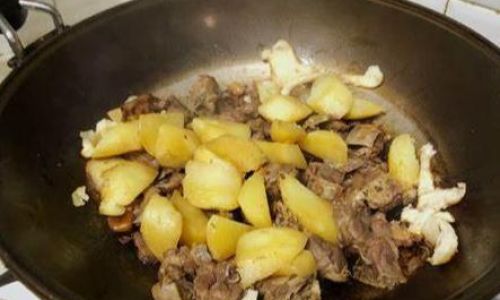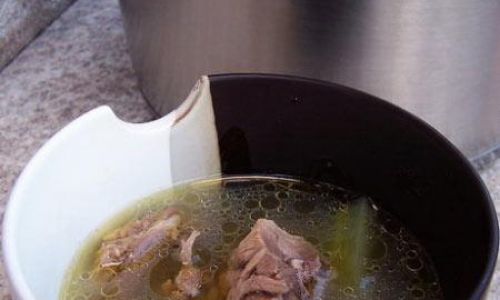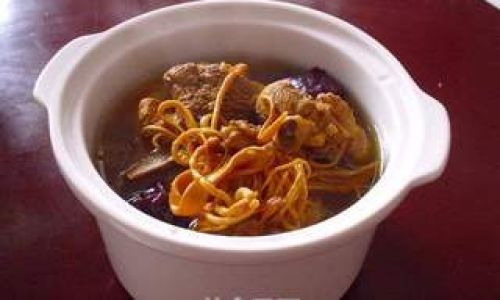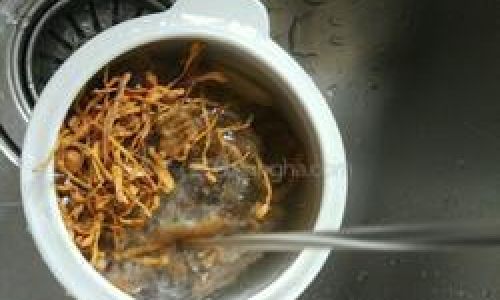Introduction
In the realm of comforting, nourishing meals, few dishes rival the rustic charm and depth of flavor found in a well-prepared goose and winter melon stew. This traditional recipe, rooted in culinary traditions that prioritize balance and seasonal ingredients, combines the rich, gamey taste of goose meat with the subtle sweetness and tender texture of winter melon. Often simmered low and slow to coax out layers of umami, this dish is a testament to the beauty of slow cooking and the harmony of contrasting flavors. Whether you’re a seasoned home cook or a curious novice, this guide will walk you through every step of creating a memorable goose and winter melon stew that warms the soul and delights the palate.
The Allure of Goose and Winter Melon
Goose meat, with its robust flavor and tender texture, has long been celebrated in cuisines worldwide. Unlike chicken or turkey, goose boasts a higher fat content, which, when rendered properly, adds unparalleled richness to dishes. Winter melon, a large gourd with a mild, almost neutral taste, serves as the perfect foil to the goose’s intensity. Its ability to absorb surrounding flavors while retaining a delicate crunch—even after long cooking times—makes it a beloved ingredient in soups, stews, and stir-fries. Together, these ingredients create a dish that is both hearty and refreshing, satisfying yet light.
Ingredients: Building the Foundation of Flavor
Before diving into the cooking process, assembling the right ingredients is key. Here’s what you’ll need:
- 1 whole goose (approximately 4–5 pounds): Opt for a young goose if possible, as its meat will be more tender.
- 1 medium-sized winter melon (about 3–4 pounds): Peel, seed, and cut into 2-inch chunks.
- 4 tablespoons vegetable oil (or goose fat, if available).
- 1 large yellow onion, diced.
- 6 garlic cloves, minced.
- 3-inch piece of fresh ginger, peeled and thinly sliced.
- 4 cups chicken or goose broth (homemade is ideal, but store-bought works).
- 1/4 cup soy sauce (preferably dark soy for color).
- 2 tablespoons Shaoxing wine (or dry sherry).
- 1 tablespoon brown sugar.
- 2 star anise pods.
- 1 cinnamon stick.
- 1 teaspoon Sichuan peppercorns (optional, for a subtle numbing heat).
- 4 dried red chilies (optional, adjust to taste).
- Salt and white pepper to taste.
- Fresh cilantro or scallions for garnish.
Equipment Essentials
- A heavy-bottomed Dutch oven or stew pot (6–8 quarts).
- A sharp chef’s knife and cutting board.
- Tongs for handling meat.
- A fine-mesh strainer (for clarifying broth, if desired).
Step-by-Step Cooking Process

Preparing the Goose
Begin by pat-drying the goose thoroughly with paper towels. Remove any excess fat from the cavity (save this fat for rendering later—it’s golden for cooking!). Cut the goose into 8–10 pieces: legs, thighs, wings, and breast portions. For easier handling, ask your butcher to do this, or use a sturdy cleaver at home.
Blanching the Goose (Optional but Recommended)
To eliminate impurities and reduce excess fat, blanch the goose pieces in a large pot of boiling water for 3–4 minutes. Drain and rinse under cold water. This step ensures a cleaner-tasting broth.
Searing the Goose
Heat 2 tablespoons of vegetable oil in your Dutch oven over medium-high heat. Working in batches to avoid crowding, sear the goose pieces until golden brown on all sides. This step caramelizes the meat, locking in flavor and creating a rich fond (the browned bits stuck to the pot) that will later season the broth. Set the seared goose aside.
Sautéing Aromatics
Reduce the heat to medium. Add the remaining oil, then toss in the diced onion, garlic, and ginger. Sauté until fragrant and translucent (5–7 minutes), scraping up any fond from the bottom of the pot.

Deglazing and Building the Broth
Pour in the Shaoxing wine, stirring to deglaze the pot. Let the wine reduce by half, then add the soy sauce, brown sugar, star anise, cinnamon stick, and Sichuan peppercorns (if using). Return the seared goose to the pot, along with the broth. The liquid should just barely cover the meat—add water if needed.
Simmering to Perfection
Bring the mixture to a gentle simmer, then cover and reduce the heat to low. Allow the stew to bubble lazily for 1.5–2 hours. This slow cooking melts the goose’s collagen into gelatin, thickening the broth and tenderizing the meat.
Introducing the Winter Melon
About 30 minutes before serving, gently add the winter melon chunks to the pot. Avoid stirring too vigorously, as the melon is delicate. Let it simmer until tender but not mushy—it should retain a slight firmness to contrast with the goose.
Final Seasoning and Garnish
Taste the broth and adjust seasoning with salt and white pepper. For a touch of brightness, squeeze in a splash of fresh lemon juice or rice vinegar. Ladle the stew into bowls, garnish with cilantro or scallions, and serve piping hot.

Tips for Success
- Fat Management: Goose is fatty, but don’t discard the rendered fat! Strain it and store it in the fridge—it’s excellent for roasting vegetables or frying potatoes.
- Texture Control: If the winter melon becomes too soft, remove it earlier next time. Cooking time may vary based on the melon’s ripeness.
- Spice Variations: Experiment with black cardamom, bay leaves, or a splash of fish sauce for depth.
- Make-Ahead Convenience: This stew tastes even better the next day. Reheat gently and adjust seasoning before serving.
The Cultural Tapestry of Goose and Winter Melon
This dish holds cultural significance in many Asian cuisines, particularly in Chinese and Vietnamese cooking. During colder months, it’s often served at festive gatherings, symbolizing abundance and togetherness. The goose represents prosperity, while the winter melon’s cooling properties balance the meal’s warmth—a nod to the yin-yang philosophy of culinary harmony.
Health Benefits: Nourishment Meets Flavor
Beyond its delicious taste, this stew offers nutritional perks. Goose meat is rich in protein, iron, and B vitamins, while winter melon is low in calories and high in fiber, vitamin C, and hydrating properties. Together, they form a dish that’s both satiating and gentle on the digestive system.
Serving Suggestions
Pair this stew with steamed jasmine rice, sticky rice, or egg noodles to soak up the flavorful broth. For a complete meal, add a side of stir-fried greens (like bok choy or spinach) and a crisp cucumber salad. A mug of jasmine tea or a light lager complements the meal’s richness.

Conclusion
Mastering the art of cooking goose with winter melon is a journey worth savoring. Each step—from searing the goose to simmering it into tender submission—is an act of patience and reverence for ingredients. The result is a dish that transcends mere sustenance, becoming a vessel for tradition, love, and the joy of sharing a meal with those you cherish. Whether you’re celebrating a holiday or simply craving a taste of home, this stew invites you to slow down, savor, and celebrate the magic of simple, wholesome cooking.
So, gather your ingredients, light the stove, and let the aromatic symphony of goose and winter melon fill your kitchen. Your taste buds—and your heart—will thank you.





0 comments